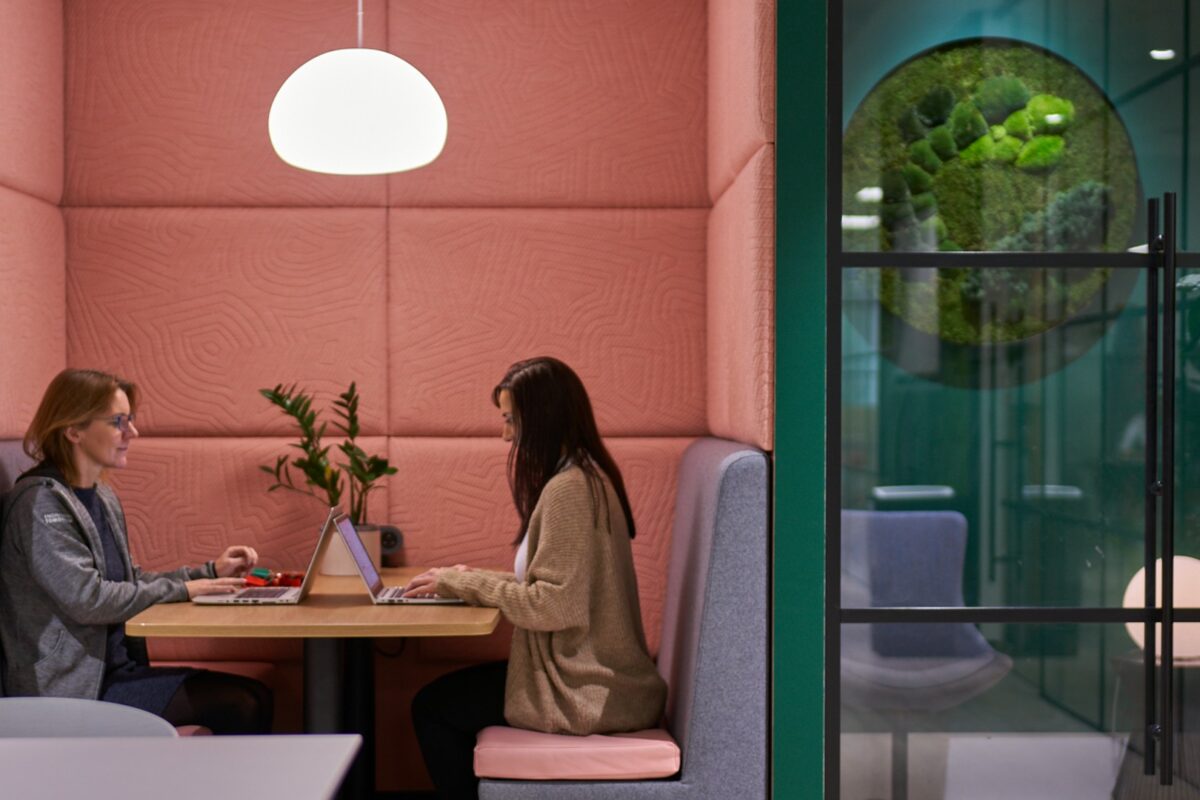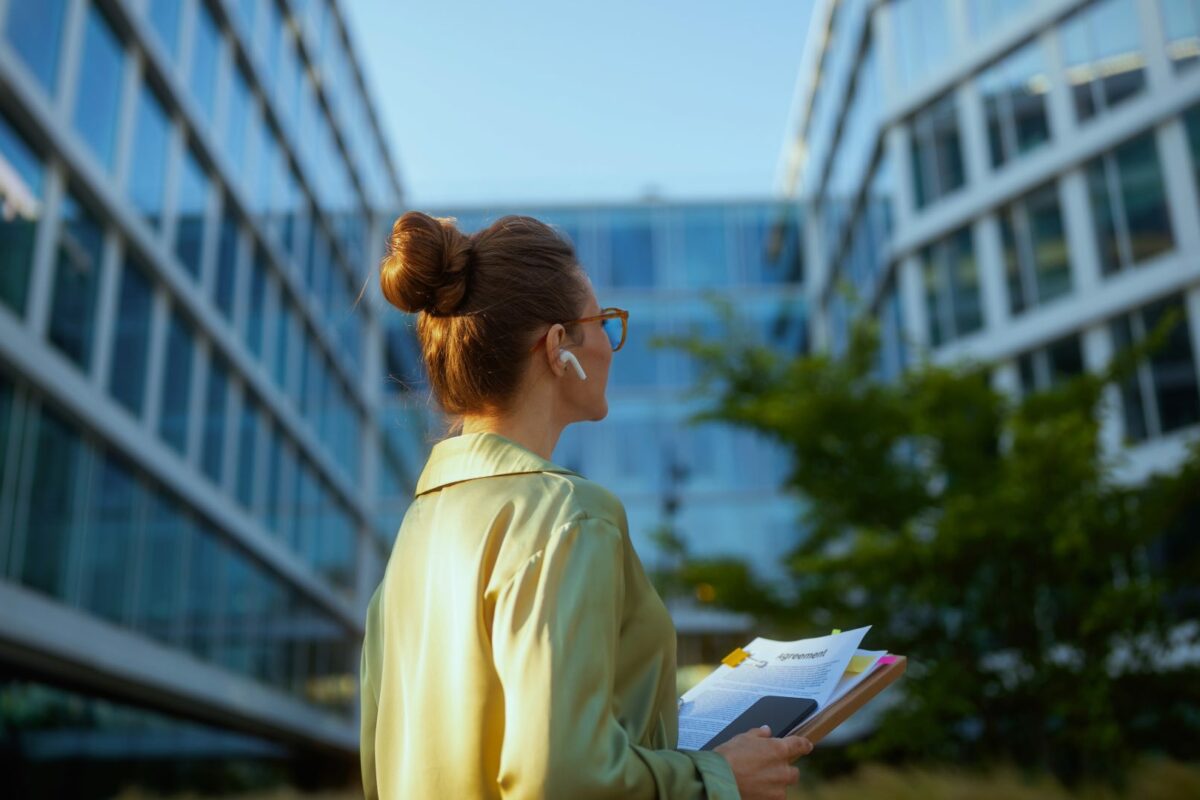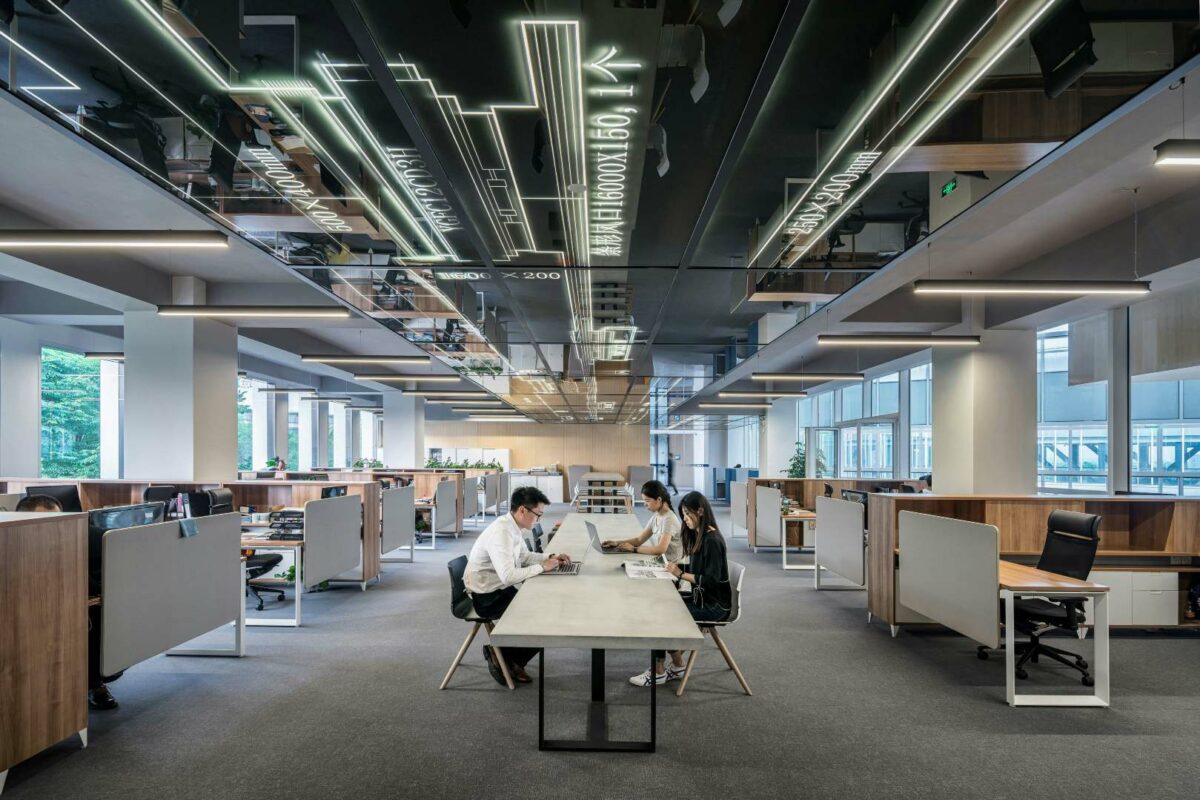Over the last few years, many companies have begun centralising employee wellbeing in their workplace strategies. A key part of this has been overhauling offices, designing flexible spaces that accommodate individual preferences and working styles, as well as encouraging a proper work-life balance.
Flexible office design means surpassing ‘day one’ requirements so that designs are equipped for future opportunities, requirements and challenges – be they 6 months or 6 years away. Employees’ happiness and wellbeing can be impacted profoundly by a company’s ability to adapt. This could mean adapting to spatial needs such as changes in team size or demographic, fulfilling demands for spaces that suit a particular task or function, or making spaces more inclusive for people who are neurodiverse or have accessibility needs. Offices should be constantly adaptable, and this presents opportunities for innovation as well as challenges.
This article is a deep dive into the relationship between flexible office design and employee wellbeing. It also provides insights and specific recommendations for how leaders can assess and measure the impact of flexible design on workplace wellbeing. This will allow them to make incremental improvements to build a more supportive and enriching work environment.
Examples of flexible office design and how they impact wellbeing
Workplace ergonomics
Ergonomic office furniture, such as adjustable chairs, desks, and monitors, can enhance wellbeing by alleviating physical strain, thereby increasing job satisfaction and limiting absenteeism. Research shows that maintaining good posture can significantly reduce the risks of physical discomfort, stress and fatigue, all of which are detrimental to wellbeing.
When encouraging people to work away from a traditional desk, furniture must be appropriate and support the needs of current and future employees. This extends to spaces such as quiet focus rooms, ‘break out’ areas for collaboration and work cafes.
Adjustability is also vital for successful onboarding. Whether current employees are moving into a new space or you’re helping a new hire get set up, furniture and workstations should be immediately adjustable. This shows that you’re prioritising wellbeing from the outset.
Space planning
A flexible approach to space planning can increase wellbeing by allowing people to work from where they feel most comfortable and perform at their best. This can be achieved by setting up spaces that can easily be rearranged, depending on team sizes, to create ‘neighbourhoods’.
It’s important that people can access a variety of settings while still being available to their team. Some may work better in a quieter, more private environment, versus someone who prefers to be in a buzzier, more collaborative part of the office. This is often dependent on the task at hand and personal preference, but the option should always be available so that everyone feels part of the workplace community.
Adjustability
Giving employees the freedom to alter their surroundings is pivotal to their wellbeing. This could mean, for instance, making lighting, airflow and temperature adjustable in some areas of an office, so individual users can have control and make spaces comfortable for them. This is particularly important when we consider the broad range of neurodiversity within a workforce (including people who experience sensory overload) as well as women with menopause symptoms, people who may suffer from migraines, and much more. Personal needs and requirements vary for us all, so designing offices with this in mind is sure to improve productivity and minimise discomfort.
Digital technology
Advances in digital technology have opened up a whole new world of possibilities for flexible office design. For instance, digitalising signs that communicate important information (and can be infinitely updated), investing in remote access technology for efficient collaboration, and specialist software that can adjust digital settings to improve usability for users with specific needs. By reacting to new research into how people work best, offices can create a more responsive and inclusive environment, where access needs are met and wellbeing is prioritised.
Flexible design, employee wellbeing, and sustainability
Flexible design ultimately prioritises adaptability and reflects a willingness to respond to change. Employees can feel empowered and valued with an approach to office design that welcomes feedback and suggestions for improvement. This might look like futureproofing working areas with growth space (with the correct power and data provision for all employees), folding partitions to create smaller or larger spaces depending on demand, and meeting rooms that can also be used for collaboration or various creative purposes.
When creating social spaces and breakout areas, ‘Town Hall’ functions can enable company meetings with AV capabilities, whilst not compromising on fantastic welfare provisions for daily use. The future workspace will embrace multi-functional spaces, and with a hybrid working model here to stay, offices must be places where people want to spend their time.
Embedding this approach into a design from the outset also puts sustainability at the heart of decisions. An adaptable design should require ‘light touch’ alterations to meet new demands, minimising environmental impact and the overall embodied carbon of a project’s life space.
Incorporating biophilia into flexible design takes the connection between sustainability and wellbeing to another level. Not only does it encourage the use of natural (and recyclable materials), but by integrating elements such as natural light and greenery, biophilic design taps into our affinity with the natural world. Incorporating it into workspaces creates spaces for people to revitalise their physical and mental energy. A study by Human Spaces found that out of 7,600 workers in 17 countries, those who worked in spaces that incorporated biophilic design reported a 15% higher level of overall wellbeing.
Measuring the impact of flexible office design on wellbeing
Workplace metrics
The impact of flexible office design on wellbeing can be measured through specific metrics such as absenteeism and productivity. A reduction in absenteeism can indicate an improved work environment where employees feel comfortable and supported. Meanwhile, an increase in productivity often signifies an effective work design that caters to individual needs and preferences. While these metrics are crucial, they should always be evaluated against the backdrop of a people-centric approach. This means making the effort to understand employees’ unique needs and experiences, giving vital context to workplace metrics.
Office usage
The effects of office design on wellbeing can also be indirectly measured by analysing office attendance and demand for office space. These metrics often indicate that the office is offering employees an experience that cannot be replicated at home. It’s important to mention, however, that these statistics should also not be used in isolation. Instead, they should serve as a starting point for leaders wanting to understand how office design can shape employee wellbeing.
Employee experience
Employee experience can be measured through surveys and focus groups, which provide valuable insights into how employees perceive their workspace. Questions regarding employees’ comfort, productivity, stress levels, and overall satisfaction can help in understanding the effectiveness of the flexible workspace. Actively engaging employees in this evaluation process not only provides actionable insights, it also shows people that their wellbeing is a priority.
Cultural benefits
Aspects such as improved collaboration, enhanced communication, and a sense of community can all signify a positive cultural shift induced by flexible design. This can be measured through observations, feedback, and the overall harmony within the workspace. A healthy office culture not only boosts morale but also significantly contributes to wellbeing by fostering an inclusive and enriching work environment.
Bio: Sarah Pasquall is a Senior Designer at Interaction, a Bath-based company specialising in modern, sustainable, and data-driven office design and fit-outs.
Content Team
Work in Mind is a content platform designed to give a voice to thinkers, businesses, journalists and regulatory bodies in the field of healthy buildings.




